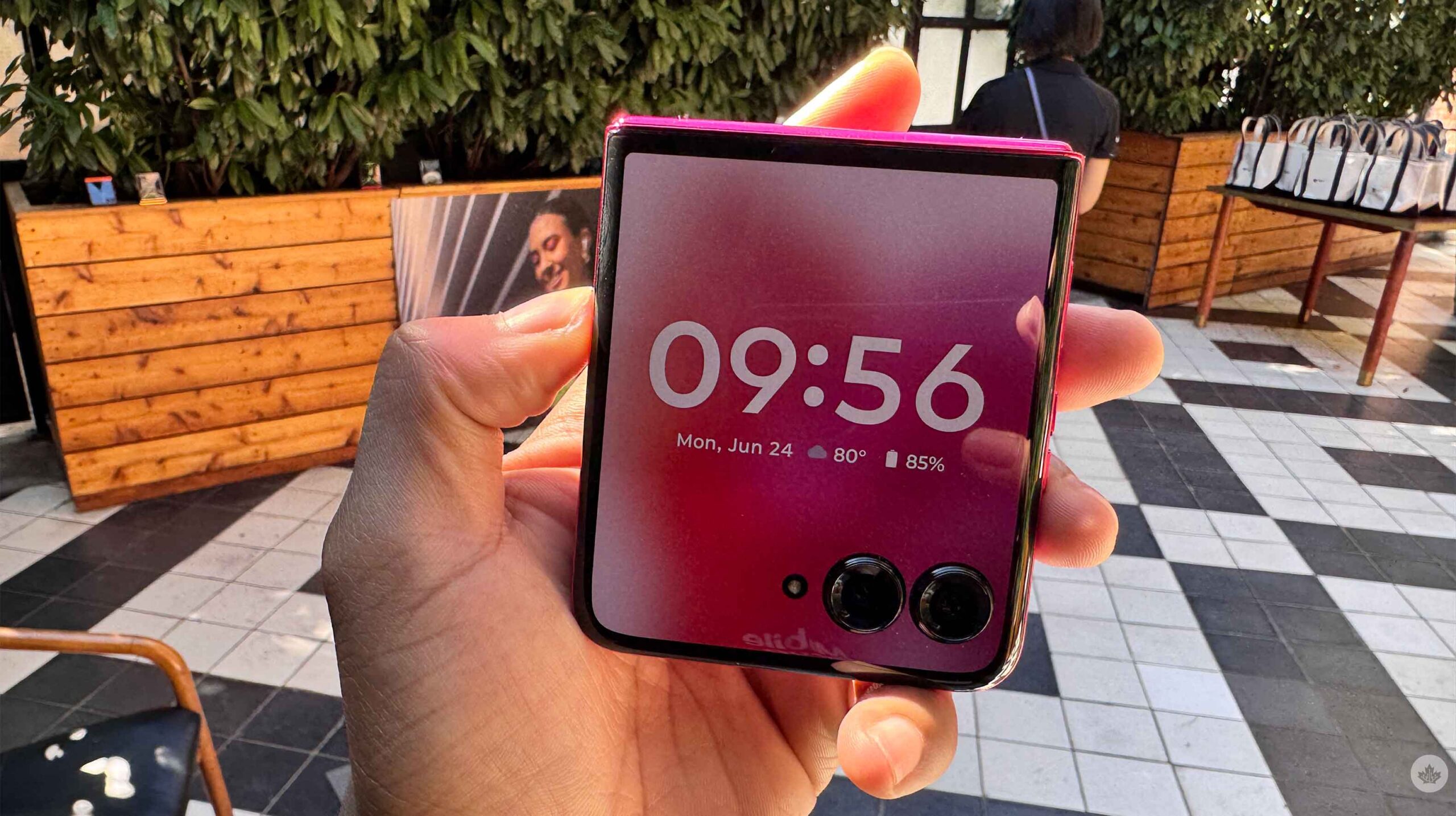Motorola has announced its two latest entries to the Razr lineup, the 2024 Razr and Razr+. The company’s headlining Razr+ smartphone will come to Canada next month. However, the base Razr isn’t available in Canada. While at first glance, neither is all that impressive, there’s a reason why Motorola has most of the market share on this form factor of foldables in North America.
These are only my initial thoughts about the devices. I’ll mostly focus on the Razr+, considering the Razr lacks Canadian availability. But it’s worth mentioning that the base Razr now looks similar to last year’s Razr+, and with that in mind, it’s a great option considering the $699 USD price point. The star of the show, the Razr+, has a sleeker design and feels more solid compared to its predecessor, which is exactly what you want when you’re using a folding smartphone.
Even bigger external display
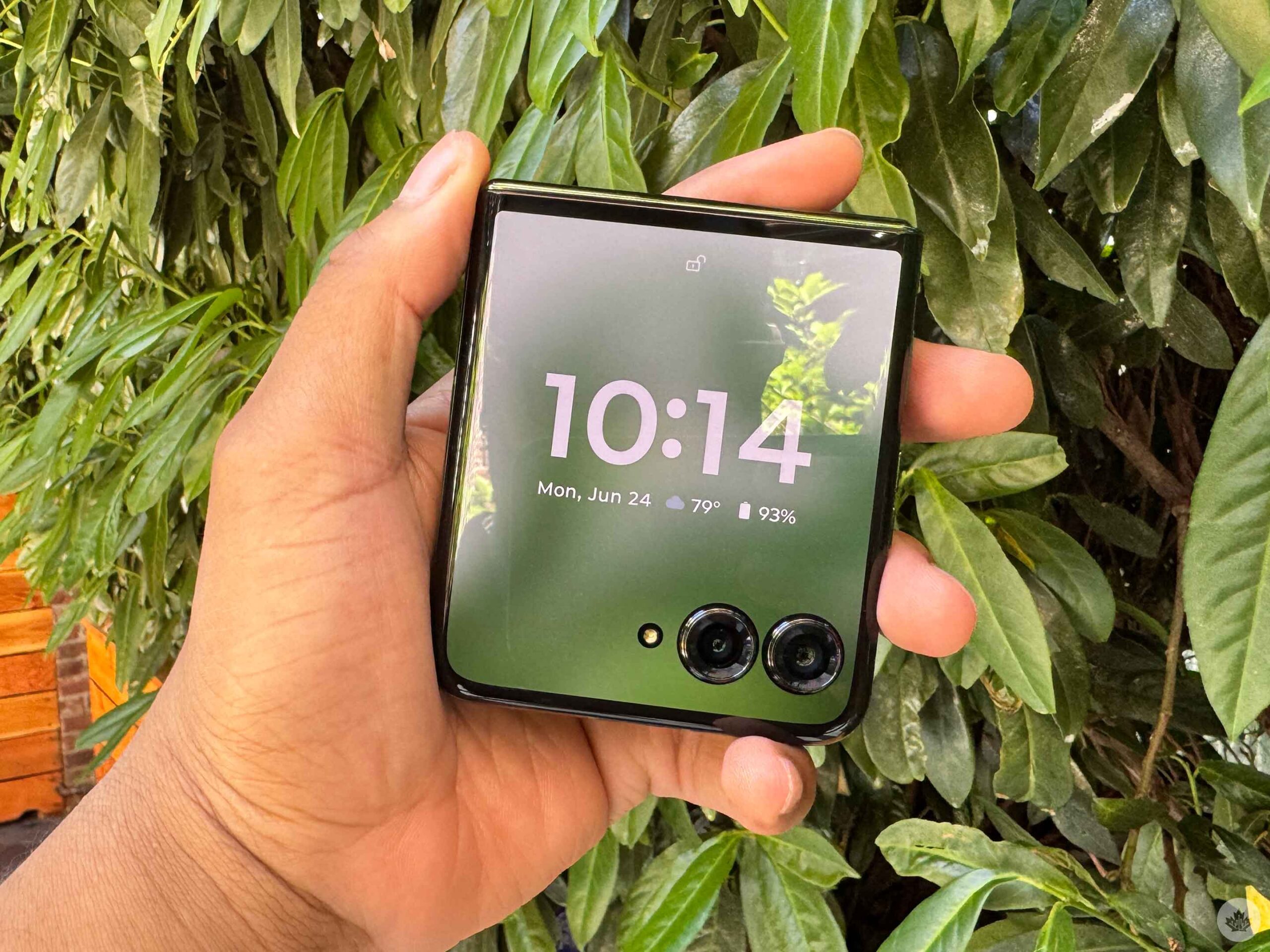
The Razr+’s front looks incredibly sleek, thanks to its smaller bezels and larger 4-inch HDR10+ display. Last year, I was already impressed by the Razr+ 2023 external screen, but this year’s model is even better. It also sports a 1272 x 1080-pixel resolution, up to 165Hz refresh rate, 2400 nits of brightness, and even a touch rate of 120Hz (165Hz when you’re gaming), making the phone feel incredibly speedy when you’re swiping through it.
This year, it also has an Always On Display that shows the time, date, battery percentage, and notification icons. When you activate the cover display, the colour returns to the screen, and you can see your lock screen properly. It’s a small touch that other OEMs have done in the past, but it looks even nicer when your handset is folded and you see the small square-shaped screen.
When you flip the phone to its rear, you’ll see the soft vegan leather in one of four colours: Spring Green, Peach Fuzz, Midnight Blue and Hot Pink. While the headlining colour this year is Peach Fuzz, Spring Green is my favourite of the four, and it breaks my heart that my review unit isn’t that pretty green variant.
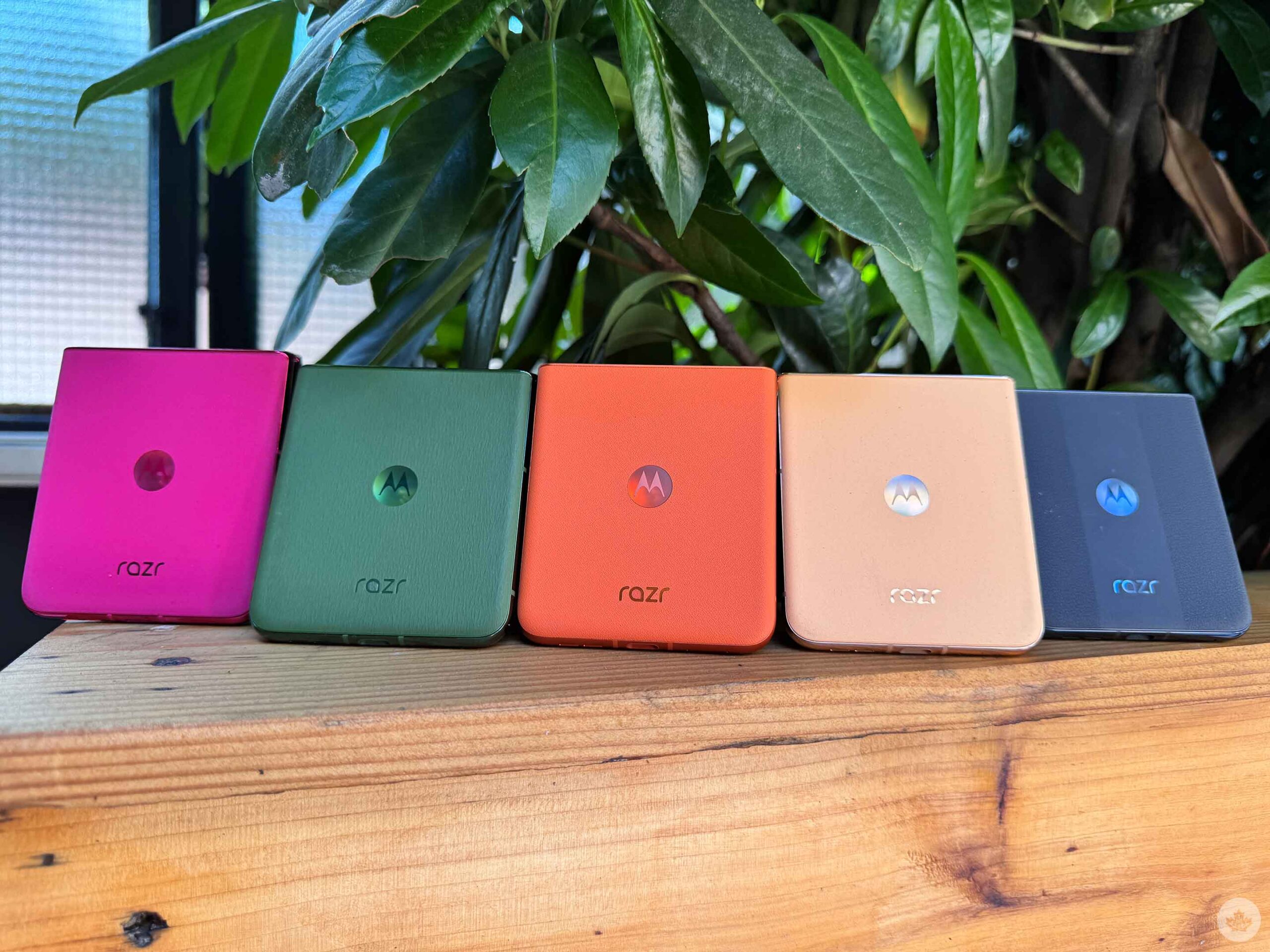
The Razr+ also has a 6000 series aluminum frame, making the handset more durable. Nick Gray from Phandroid dropped one of the hands-on units, and even though it sounded like it should have broken, the handset was fine. I’m not saying it has a MIL-STD grading, but considering the leather back, the handset isn’t as breakable as many others on the market.
On the bigger cover screen, you can do more than before. For instance, you can activate Google Assistant (or Gemini) without opening or unlocking your handset (depending on your query). You can add even more panels (or home screens) with widgets, contacts, Google Fit, and specifically one for Spotify. Similar to last year, an ‘Extended View’ option extends the screen past the dual cameras.
Flip it open
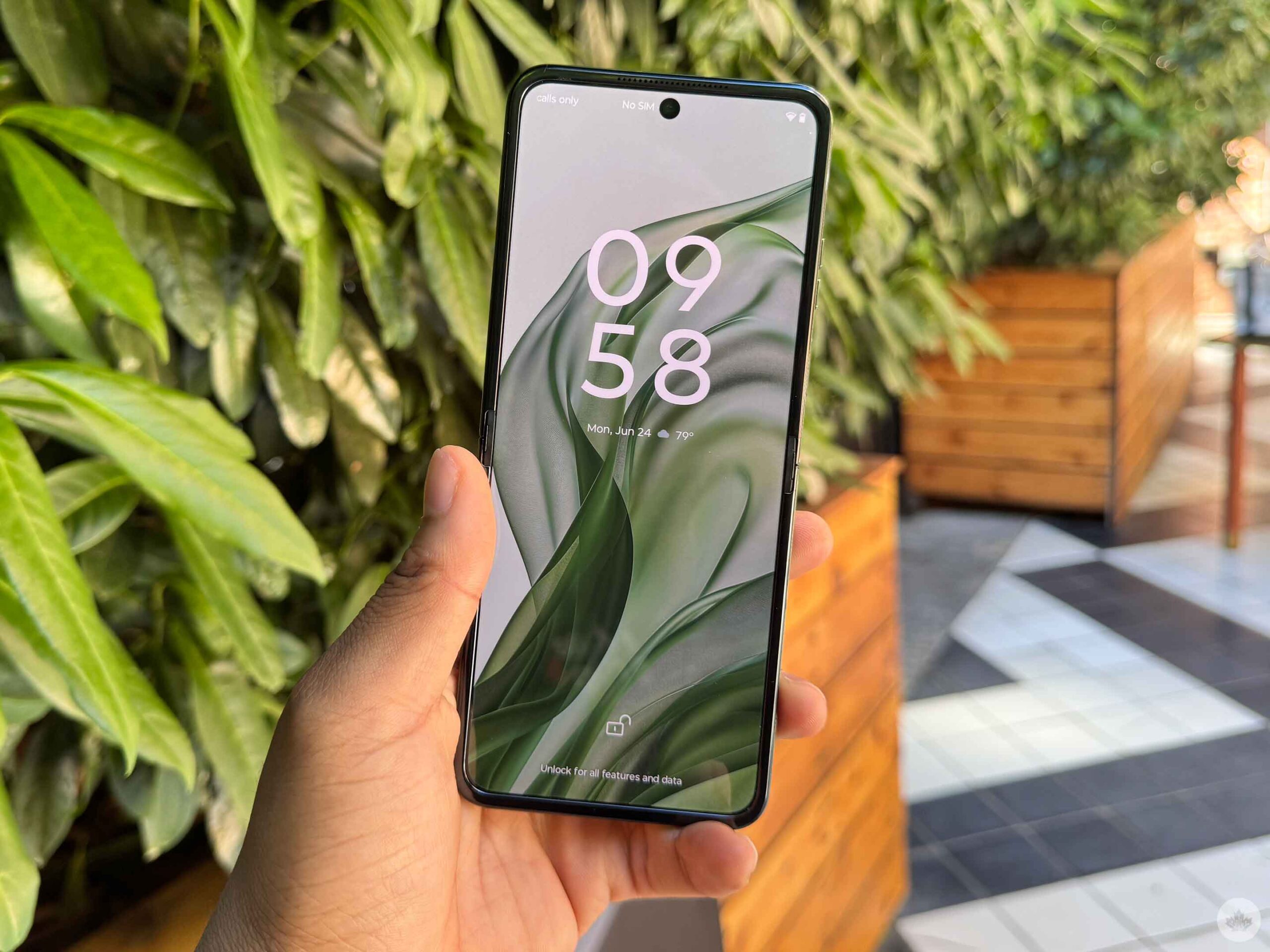
When you flip open the Razr+, you’re greeted with a 6.9-inch LTPO pOLED primary screen with a 2640 x 1080-pixel resolution, up to 165Hz refresh rate, 240Hz touch sampling rate (or 360Hz when gaming) and an astonishing 3000 nits of brightness.
The display looked good, but I’ll have to spend more time watching content, looking at pictures, and checking out the peak brightness on a sunny day.
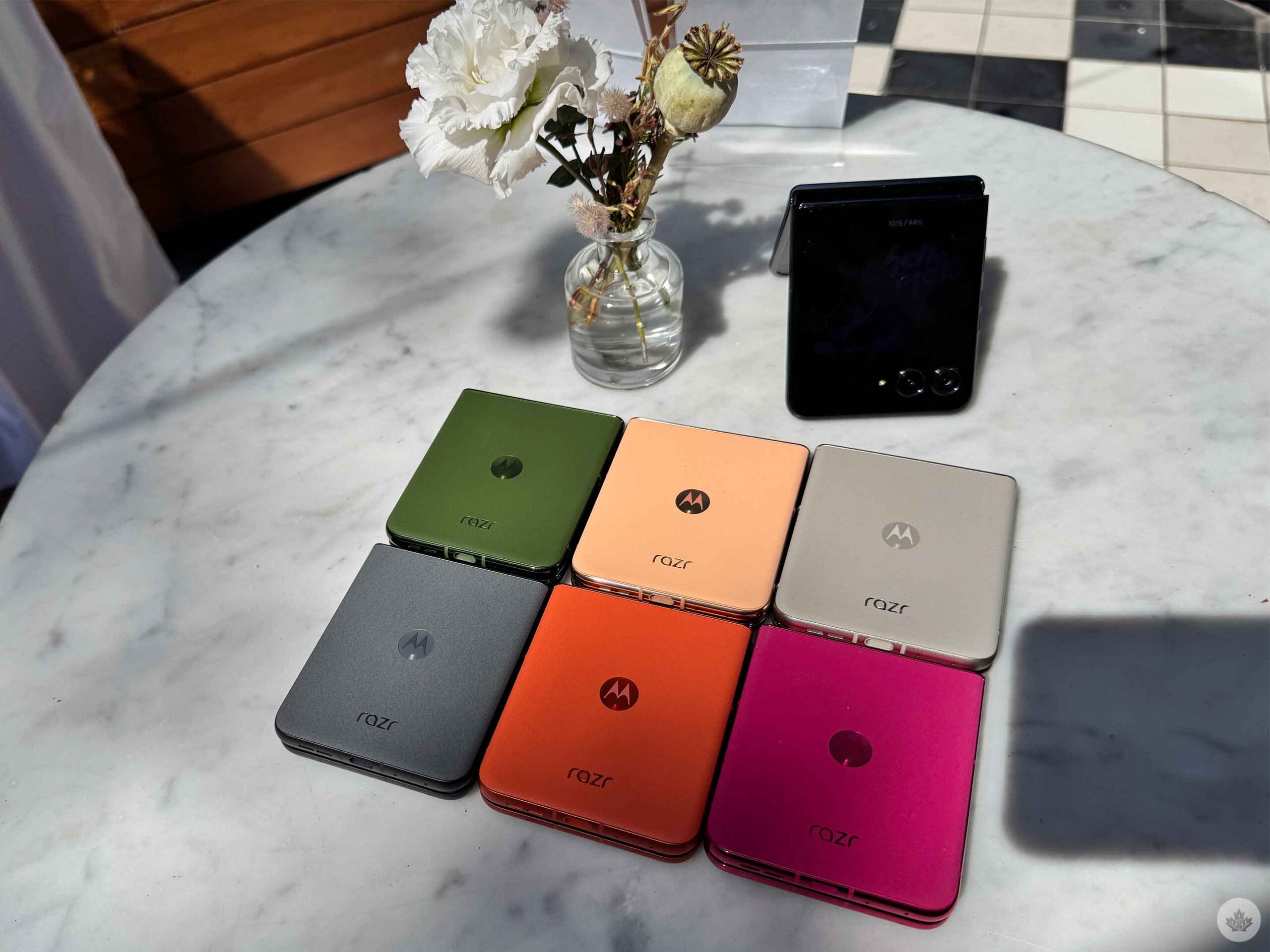
The device also sports Android 14, 256GB of built-in storage, 12GB of RAM and Snapdragon 8s Gen 3. It also has a 4,000mAh battery with 45W turbo power charging and IPx8. While this is all nice on paper, I’ll have to put the Razr+ through its paces before deciding whether this 4,000mAh battery is worth it or if 12GB of RAM and the Snapdragon 8s Gen 3 are enough to power the handset.
It’s awesome that Motorola improved the waterproofing on this handset compared to its predecessor. An IPx8 rating means you can take your Razr+ underwater or in the shower if you don’t want to stop watching your TV shows.
Hello Moto
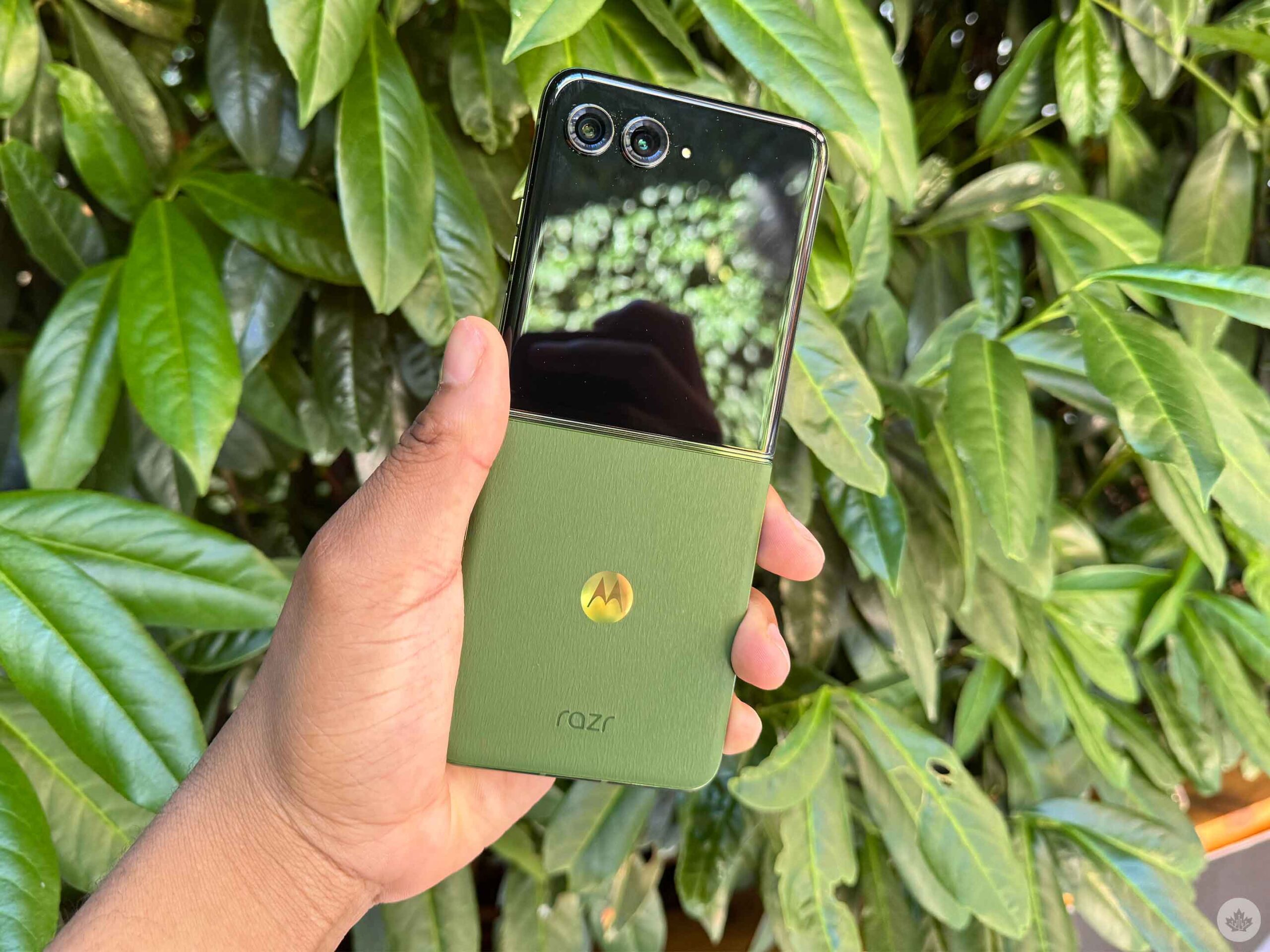
This year, the Razr+ sports a 50-megapixel primary shooter and a 50-megapixel telephoto camera with 2x optical zoom. This replaces the ultrawide on last year’s model. Personally, I prefer an optical sensor versus an ultrawide, so I’m happy for this change. However, a 2x optical is mostly designed for portraits, which is nice because I love taking pictures of myself and my friends, but 2x zoom isn’t a lot, and you won’t be using it like the 5x zoom on Samsung’s Galaxy S24 Ultra.
I played around with this camera, and it looked great, but I’ll put it through its paces before making any final conclusions.
The handset also has a 32-megapixel selfie camera, which I didn’t use very much. If I want to take a selfie, I’ll use rear-facing cameras, considering they’ll offer a better experience.
Motorola also returned the camcorder mode to the Razr+, allowing users to hold their Razr smartphone like an old-style camcorder. This time, when you hold your handset like a camcorder with the camera open, the Razr+ will automatically start taking a video. You can have the device take these videos in either portrait or landscape. I liked the camcorder mode in last year’s model, and I can’t wait to try it out during the review process.
AI everywhere
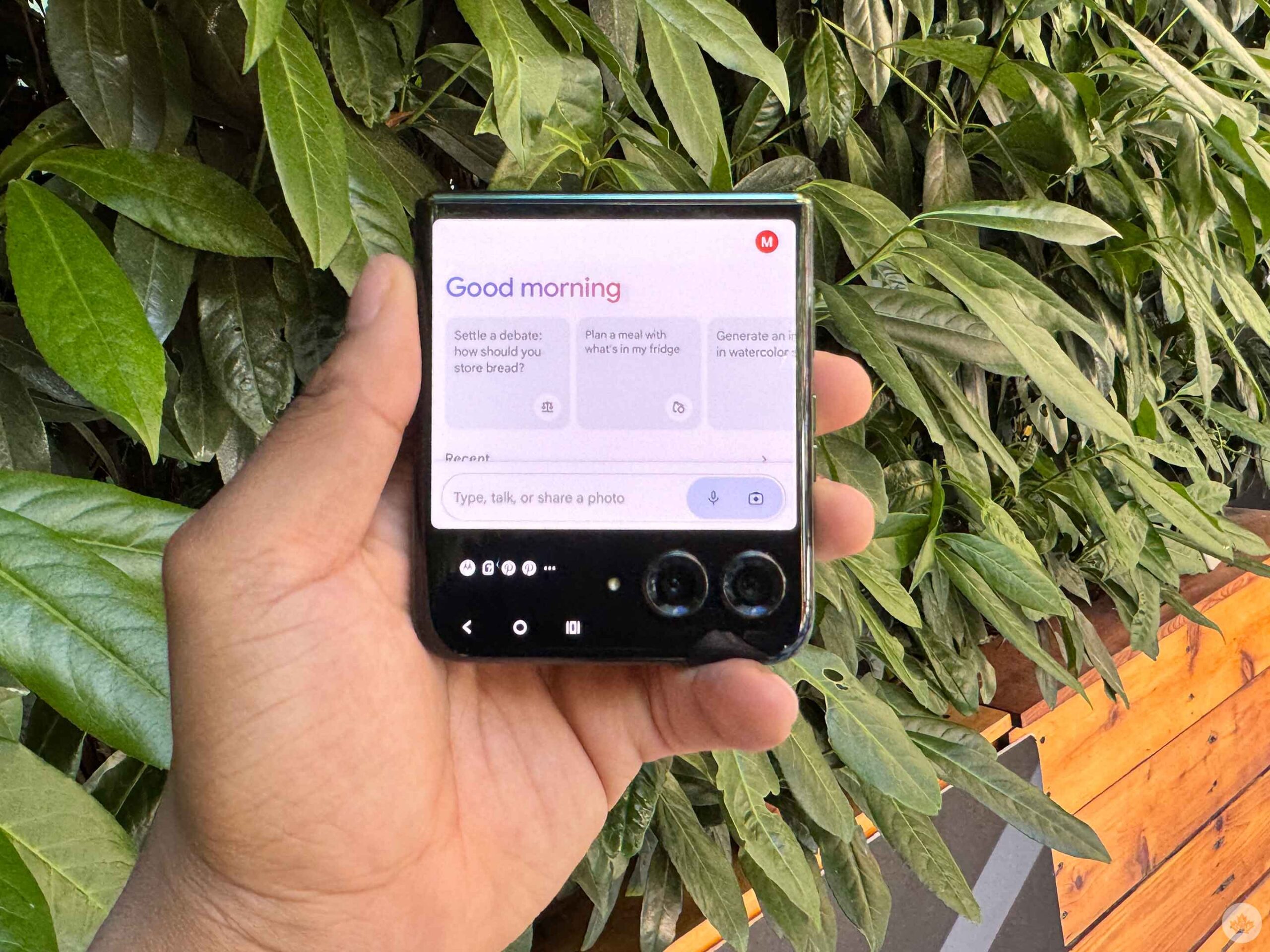
Of course, like every other handset launching this year, Motorola had to mention new AI features powered by the Snapdragon 8s Gen 3. The Razr+ comes with Google’s Gemini pre-installed, and Motorola is offering three months of Gemini Advanced with the purchase of the Razr+.
On top of Gemini, the Razr+ has ‘Create with AI,’ allowing you to make wallpapers by typing in words. I played with this during our hands-on, but I’ll try it out more for my review. There’s also Style Sync, which lets you take a picture of your outfit, and it’ll make a wallpaper based on this. I thought this looked fun, but it’s not a feature I can see myself using in the future.
Motorola also talked about Moto AI, a personal assistant that seems pretty useful. The company introduced this at Lenovo Tech World but went into it again during our pre-briefing. This personal assistant works in the background and interacts with your other apps, such as texts, e-mails and more. You can then ask the Assistant to catch you up on your notifications so you don’t have to go sift through them. You can say, “Pay attention,” and it will start recording your conversation, transcribing it, and even summarizing it.
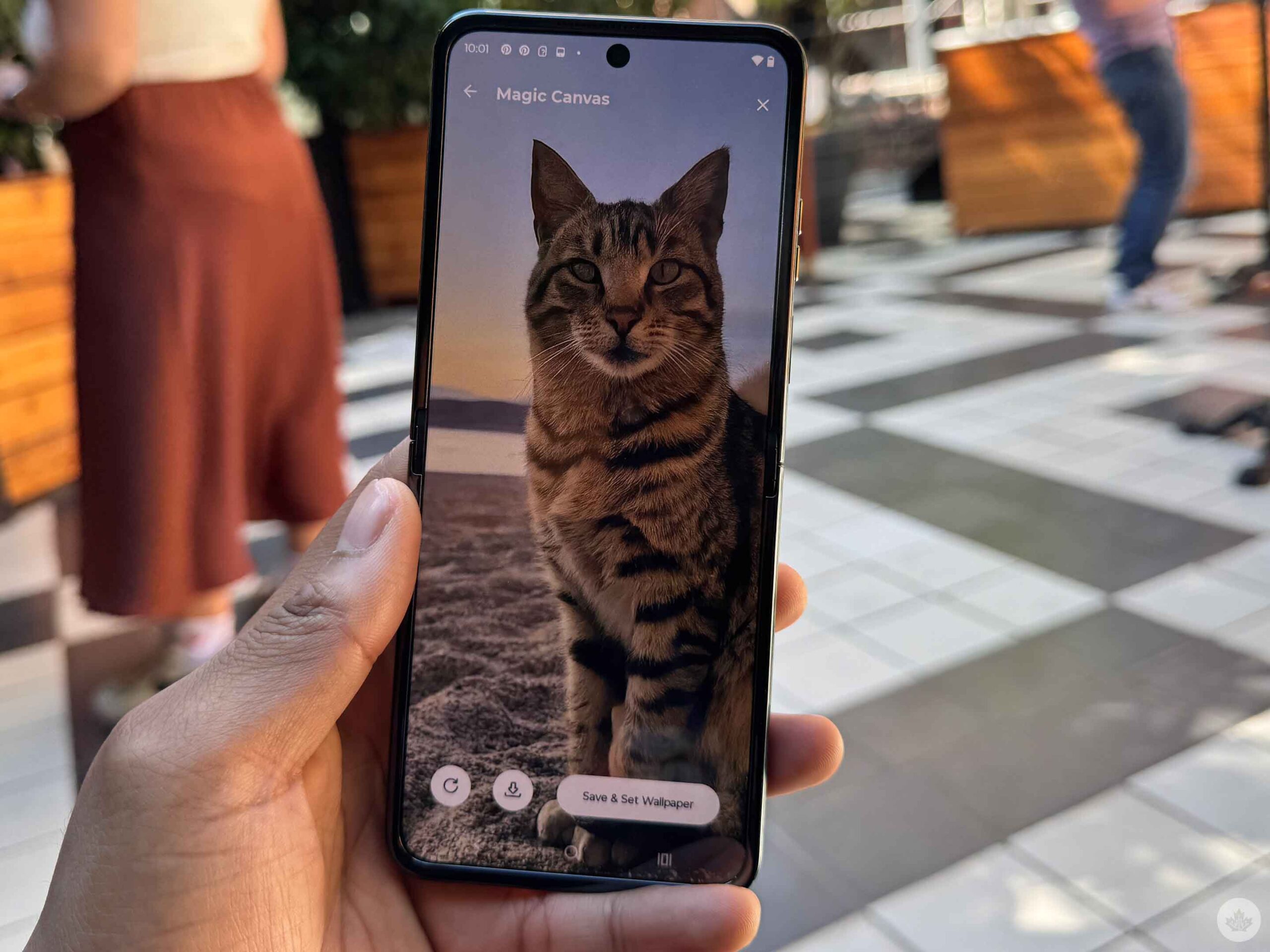
This seemed very cool, and it was an Android offering to compete against Apple Intelligence. However, like Apple Intelligence, it isn’t available yet, but I’m eagerly waiting for Motorola to release this feature.
The Motorola Razr+ is available for pre-order on July 10th and comes out at select carriers and retailers on July 24th for $1,299.99. I need to spend some time with the Razr+ before deciding whether that price is worth it. However, my first experiences with the device have been incredibly positive, and I’ll share more about my thoughts in the coming weeks.
